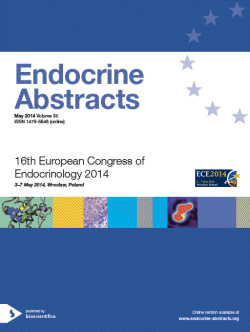Searchable abstracts of presentations at key conferences in endocrinology
Symposia
Gonadal hormones and obesity
ea0035s25.1 | Gonadal hormones and obesity | ECE2014
Gonadal hormones and obesity: estrogens and body weight
The gonadal axis is an important modulator of both energy balance and metabolism. Estradiol administration to either ovariectomized female or male rats leads to inhibition of food intake and decreased body weight. Other studies have suggested the presence of estrous cycle variation in meal size and body weight in rodents, as well as during pregnancy and lactation. Recent data also indicate that estradiol modulates the appetite responses to central and peripheral signals and th...
ea0035s25.2 | Gonadal hormones and obesity | ECE2014
PCOS and obesity: unveiling the basic links
The polycystic ovary syndrome (PCOS), affecting 47% of women worldwide, is one of the most common causes of infertility. Hyperandrogenism and chronic oligo-anovulation are the prominent clinical features. However, PCOS is no longer considered as a constellation of disorders only related to the reproductive sphere, but represents an aggregation of metabolic disorders having an early onset and with advancing age predominating over reproductive disorders. Obesity, particula...
ea0035s25.3 | Gonadal hormones and obesity | ECE2014
Perinatal androgen exposure and body weight fate
The etiology of PCOS is not well understood, but genetic, epigenetic, and environmental factors have all been implicated in its development. Clinical evidence suggests that excessive secretion of sex steroids, in particular androgens, plays a role in the pathophysiology of PCOS. The main metabolic phenotype is hyperinsulinemia and insulin resistance (IR). These often precede the development of type 2 diabetes mellitus (T2DM) and occur independently of body weight, although obe...




